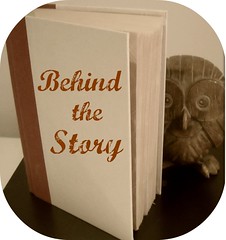This week's topic:
Emotion
The past two weeks I've been discussing emotional plots and emotional journeys from a writer's perspective. For previous posts:
What the Experts Have to Say
Writing Young Adult Fiction For Dummies
By Deborah Halverson
Pages 98-99 examine the differences between plot driven stories and character driven stories.
Plot driven stories “put the action first” and “have an episodic feel to them as the characters move from event to event” and are often described as “page turners.” Plot driven stories tend to appeal to boys and are often the following genres: adventure, fantasy, mystery, crime, thriller, and sometimes historical fiction. One warning about plot driven stories is that characters can sometimes become stereotypical because the author wants to move the pace along instead of spending time on characterization.
Character driven stories “spotlight your main character’s emotions and psychological development” and “what happens isn’t as important as how the character reacts emotionally to what happens.” The following genres are often character driven: contemporary-issue books, chick lit, multicultural stories, and coming-of-age themed books. Some warnings for character driven stories are to beware of telling instead of showing, not to be afraid of action because it can reveal more about your character, and to beware slow pacing from too much emotional wallowing and self-analysis.
The Emotion Thesaurus: A Writer’s Guide to Character Expression
By Angela Ackerman and Becca Puglisi
This is a very cool book. Emotions are arranged alphabetically into entries similar to a dictionary or encyclopedia. You can look up an emotion and it will give you:
- definition
- physical signals
- internal sensations
- mental responses
- cues of acute or long-term feelings
- what this emotion could escalate to
- cues of suppressed feelings
It’s really an amazing little book. Especially if you feel like you are overusing the same response for an emotion. For example, your character keeps having stomach fluttering when she’s nervous. If you look up nervousness, you get 33 physical signals and 11 internal sensations that indicate nervousness. So awesome!
The Art of Fiction: Notes on Craft for Young Writers
By John Gardner
Gardner presents an interesting exercise for using description of setting to convey the emotions of the character. His exercise: “Describe a barn as seen by a man whose son has just been killed in a war. Do not mention the son, or war, or death. Do not mention the man who does the seeing.” Gardner says that a talented writer should be able to conjure a powerful image that evokes everything the man is feeling using the barn as a focus.
Second Sight: An Editor’s Talks on Writing, Revising, & Publishing Books for Children and Young Adults
By Cheryl Klein
Klein has a short but wonderful chapter in her book titled, “Four Techniques to Get at the Emotional Heart of Your Story.” My favorite part of the chapter was where she said, “Every scene has to have a point, and often it is an emotional point.” When you’re revising a manuscript, and perhaps asked to cut scenes, you can ask yourself if this scene is a plot point or an emotional point. She even goes so far to say that writers will often cut off after the action and right before the emotional point is reached. This made me wonder if I had any scenes where emotions weren’t dealt with because I cut out too early.
How to Write a Damn Good Novel
By James N. Frey
Frey has a great section titled, “Inner Conflict and the Necessity Thereof.” Basically, he writes that inner conflict is necessary for good fiction. He gives several classic literary examples to illustrate his point. He says that Godzilla doesn’t have the makings of dramatic fiction because there is no inner conflict. Giant green monster tearing up your city, of course you kill him. There is no internal battle of wills. In Hamlet on the other hand, the prince wants to kill his father’s murderer but has an internal struggle against it. This internal struggle is what grips the reader and makes great dramatic fiction.
I hope you've enjoyed this series of posts on emotion! Let me know in the comments if you have another writing topic you'd like to see featured!
Links to Previous 'Behind the Story' Posts:

So many good resources here. Also... that emotional thesaurus sounds like EXACTLY what I need.
ReplyDelete